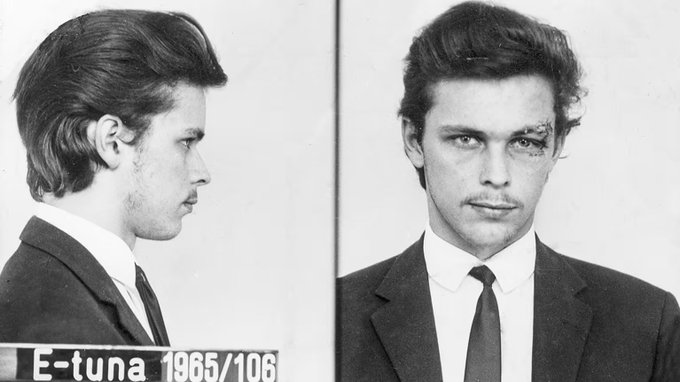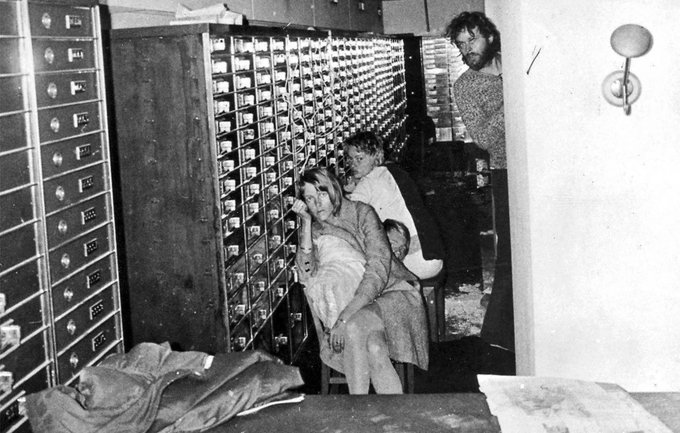Clark Olofsson, the notorious Swedish bank robber whose involvement in a dramatic 1973 Stockholm hostage crisis gave rise to the term “Stockholm syndrome,” has died at the age of 78 after a prolonged illness, his family confirmed on June 26, 2025.

The Man Behind the Myth
Born in 1947, Clark Olofsson’s life was marked by turbulence and crime from an early age. Growing up in a troubled household plagued by alcoholism, Olofsson and his siblings spent time in foster care. His early years were characterized by rebellion and frequent run-ins with the law, culminating in convictions for burglary, assault, and even involvement in the killing of a police officer during a robbery. Olofsson would spend more than half his life behind bars, becoming one of Sweden’s most infamous repeat offenders.
Despite his criminal record, Olofsson achieved a kind of celebrity status in Sweden, partly due to his charisma and the media attention surrounding his escapades. His notoriety reached its peak during the 1973 Norrmalmstorg robbery, which would forever link his name to a unique psychological phenomenon.

The 1973 Norrmalmstorg Robbery
On August 23, 1973, Jan-Erik Olsson, a convict on parole, stormed into Kreditbanken in central Stockholm, armed with a submachine gun. He took four employees—three women and one man—hostage in the bank’s vault. Olsson demanded the release of his friend Clark Olofsson, then serving time for armed robbery, as well as money, weapons, and a getaway car. Swedish authorities, under immense public and media pressure, agreed to bring Olofsson to the bank in hopes of resolving the crisis.
The ensuing standoff lasted six days, with police and journalists surrounding the square outside the bank. During this tense period, an unexpected psychological dynamic began to unfold: the hostages, instead of fearing or resenting their captors, began to express empathy and even loyalty toward them. In one notable phone call, hostage Kristin Enmark told the Swedish prime minister that she trusted the robbers and feared the police would endanger their lives. Upon their release, none of the hostages would testify against Olofsson or Olsson; instead, they raised money for the men’s legal defense.
Birth of a Psychological Phenomenon
The behavior of the hostages baffled authorities and the public alike. Swedish psychiatrist Nils Bejerot, who assisted police during the crisis, coined the term “Norrmalmstorg syndrome”—later known internationally as “Stockholm syndrome”—to describe the phenomenon in which hostages develop emotional bonds with their captors. The term quickly entered popular culture and has since been applied to a variety of hostage and kidnapping cases worldwide, including the high-profile kidnapping of newspaper heiress Patty Hearst in the United States.
The syndrome has been both influential and controversial in psychological circles. While it is widely referenced in media and popular discourse, many contemporary psychiatrists question its validity, noting the lack of consistent academic research and its absence from official diagnostic manuals.
Olofsson’s Legacy
Clark Olofsson’s role in the 1973 bank siege cemented his place in criminal history. His life and exploits have been the subject of books, documentaries, and even a Netflix series, “Clark.” Despite his repeated convictions—including robbery, attempted murder, drug dealing, and assault—Olofsson remained a figure of fascination in Sweden and beyond.
He died in a Swedish hospital after a lengthy illness, closing the chapter on a life that, for better or worse, changed the way the world understands the psychology of captivity and trauma.
The Enduring Mystery
Half a century after the Norrmalmstorg robbery, the concept of Stockholm syndrome continues to intrigue psychologists, criminologists, and the public. Whether viewed as a genuine psychological response or a contested theory, its origins are inseparable from the actions of Clark Olofsson—a criminal whose legacy extends far beyond the walls of any prison.

